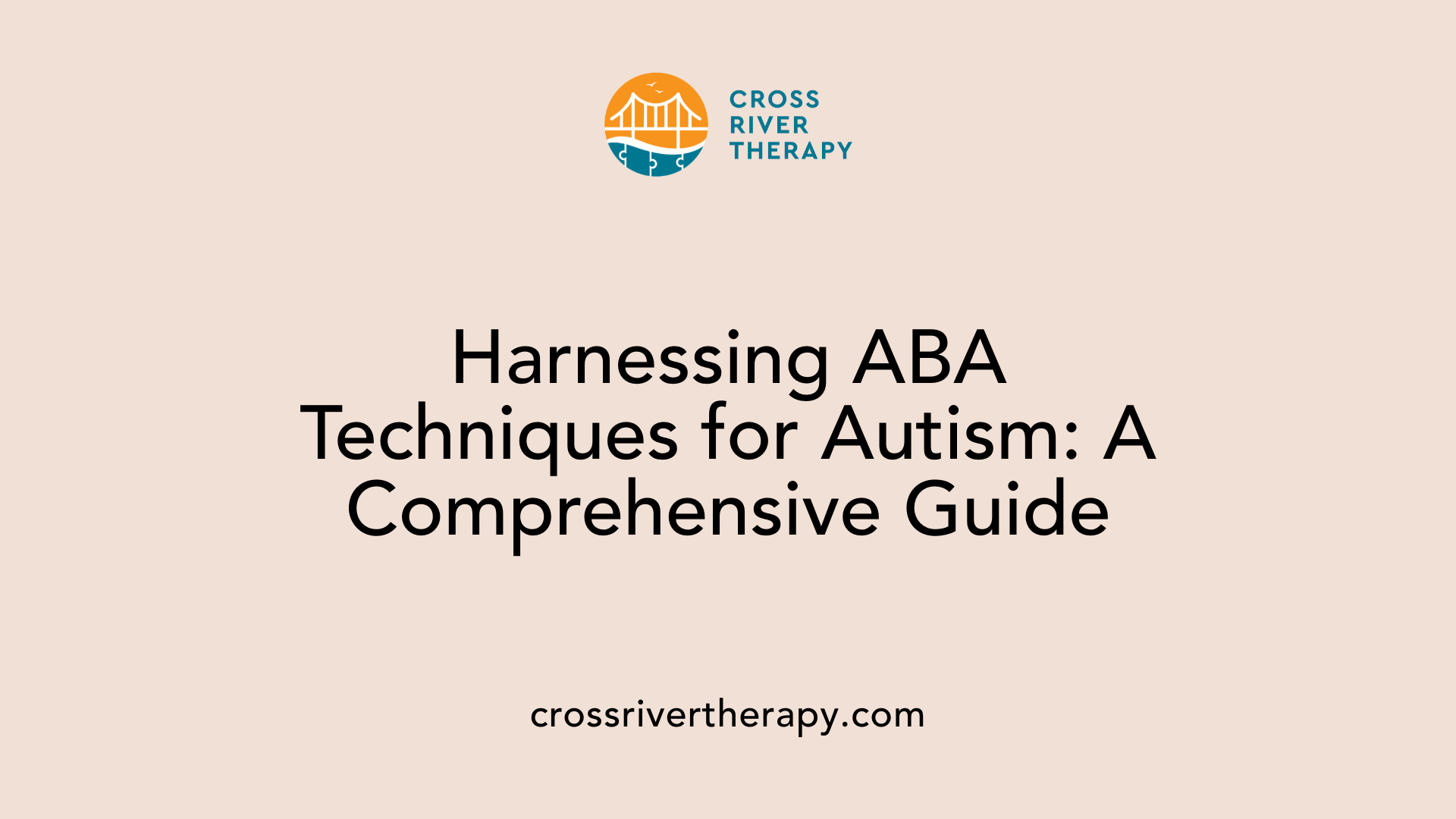Why ABA Therapy Works for Long-Term Success in Autism Treatment
Harnessing ABA Therapy for Sustained Improvements in Autism
Introduction to ABA Therapy's Impact on Autism
Applied Behavior Analysis (ABA) therapy is recognized as a highly effective intervention for autism treatment. Grounded in behavioral science, ABA systematically supports individuals with Autism Spectrum Disorder (ASD) by enhancing social, communication, and adaptive skills. With a robust evidence base spanning decades, this therapy stands out for its long-term success in improving quality of life for autistic individuals. Through personalized, intensive, and data-driven approaches, ABA enables meaningful changes that help individuals navigate various challenges associated with autism.
Understanding ABA Therapy

What does ABA therapy stand for?
ABA stands for Applied Behavior Analysis, which is a therapeutic approach that focuses on understanding human behavior and how it is influenced by the environment. It aims to increase helpful behaviors, such as communication and social skills, while decreasing harmful or undesirable behaviors, particularly in children with autism.
Developed since the 1960s, ABA therapy utilizes techniques like positive reinforcement to encourage desired behaviors. For instance, rewarding a child for practicing social skills can promote their repetition of these behaviors. Treatment plans are tailored to meet the individual needs and preferences of each child, making it a flexible and personalized approach.
Recognized as an evidence-based treatment, ABA has shown effectiveness in helping individuals improve important life skills and manage their behaviors. Research supports that higher intense and longer-term ABA sessions, typically lasting hours per week over several years, yield better long-term outcomes.
The history of ABA therapy traces back to behaviorism’s principles, evolving through key studies, including Dr. O. Ivar Lovaas' pioneering work in the 1980s that demonstrated significant cognitive improvements in children with autism. Today, modern practices emphasize a compassionate approach, focusing on skill development rather than merely correcting behaviors.
Applying ABA Therapy in Autism Treatment

What is ABA therapy for autism?
ABA therapy, or Applied Behavior Analysis, is a scientifically grounded approach designed to support individuals with autism by enhancing their social, communication, and learning skills. It employs principles of behavior management, primarily focusing on increasing positive behaviors through methods like positive reinforcement and customized treatment plans tailored to each individual's needs.
Role of ABA in autism treatment
The therapy often starts with a thorough assessment by a Board Certified Behavior Analyst (BCBA), who creates a personalized program that may utilize various strategies, including Discrete Trial Training (DTT) and Natural Environment Training (NET). Research has shown that when ABA therapy is implemented intensively, especially in early childhood, it can lead to significant developmental gains, aiding children in acquiring essential skills for daily living.
Key strategies and techniques
Some key strategies employed in ABA therapy include:
- Positive Reinforcement: Encourages children to repeat desired behaviors by rewarding them with meaningful incentives.
- Discrete Trial Training (DTT): Breaks down learning into small, manageable steps for easier mastery.
- Natural Environment Training (NET): Focuses on teaching skills in the child's everyday environment, promoting real-world application.
Benefits in autism
Overall, ABA is recognized as an effective early intervention method that contributes to individuals with autism achieving better long-term outcomes. Studies indicate that children receiving intensive ABA can see marked improvements in communication abilities, socialization, and adaptive behavior, thus enhancing their overall quality of life.
Duration and Commitment in ABA Therapy
How long do autistic children typically need ABA therapy?
The duration of Applied Behavior Analysis (ABA) therapy for autistic children typically spans 3 to 5 years. However, this timeline is highly personalized and tailored to each child’s distinct progress and requirements.
Sessions are generally scheduled 2 to 5 times per week, with individual sessions lasting between 2 to 7 hours. Such flexibility allows for intervention intensity that aligns with the child’s current skills and goals.
Factors affecting duration
Several elements influence the length and intensity of ABA therapy, including:
- The initial assessment by a Board Certified Behavior Analyst (BCBA) to identify the child’s needs.
- The complexity of behaviors that require intervention, as more intricate issues may necessitate a longer duration of support.
- Family input regarding treatment goals, which can shape both the focus and overall duration of therapy.
Assessments and goal achievements
Collaborative decisions regarding the continuation or cessation of therapy are based on the child’s progress towards their established goals. This includes evaluating the consistency of the child's skills across various environments like home and school. Ultimately, the commitment to ABA therapy aims to foster positive growth, enhancing independence, and social skills for children with autism, ensuring that learning is applied consistently in multiple settings.
Long-term Success and Studies on ABA Therapy

Are there any long-term studies on the outcomes of ABA therapy for autism?
Yes, extensive long-term studies have examined the outcomes of Applied Behavior Analysis (ABA) therapy for autism, producing a variety of insights. Research indicates that children receiving intensive ABA therapy have shown significant improvements in cognitive abilities, social skills, and adaptive functioning. Notably, findings from high-quality longitudinal studies demonstrate that many children continue to benefit long after the completion of ABA interventions.
However, the effectiveness of ABA can vary among individuals based on several factors, such as the severity of autism, the timing of intervention, and the intensity of services provided. For instance, children who engage in early and intensive ABA often realize better outcomes than those who start therapy later or receive minimal intervention.
Evidence of longevity of ABA benefits
Studies reveal that skills acquired during ABA therapy can persist over the years. For instance, a landmark study indicated that nearly 90% of children who received intensive ABA displayed substantial improvements, with many becoming indistinguishable from their typically developing peers after therapy. The sustainability of these gains is vital, showcasing that appropriate intervention timing and consistent support significantly influence long-term success.
Sustainability of ABA outcomes
Long-term studies reinforce the idea that targeted strategies within ABA, such as consistency in reinforcement across various environments, greatly enhance the retention of skills. Children who demonstrated skill generalization across home, school, and community settings tended to maintain their developmental progress.
Additionally, ongoing parental involvement and coordination among caregivers play crucial roles in sustaining ABA outcomes. By helping to ensure that strategies are consistently applied, families contribute to their children's long-term success in different environments. Overall, the evidence suggests that with proper planning and execution, ABA therapy can yield lasting benefits for individuals with autism.
Success Factors in ABA Therapy

What factors influence the success and duration of ABA therapy?
The effectiveness and duration of Applied Behavior Analysis (ABA) therapy are impacted by several interrelated factors. First, having well-defined treatment goals tailored to the individual child's needs is vital. This personalization allows for focused interventions that align with the child's specific challenges and strengths.
Early Intervention Benefits
Starting ABA therapy at an early age greatly enhances its effectiveness. Research shows that children who begin intensive sessions early, typically ranging from 25 to 40 hours per week, experience significant improvements in communication and social skills, laying a strong foundation for future development.
Intensity and Consistency Matter
The intensity and consistency of therapy sessions play a crucial role. An established routine helps reinforce learning across different settings, improving the child's ability to generalize skills. Family involvement is also essential, as active participation in therapy sessions allows parents to reinforce skills at home, ensuring continuity in learning and behavioral reinforcement.
| Aspect | Importance | Key Elements |
|---|---|---|
| Early Intervention | Enhances overall outcomes | Starting therapy as young as possible |
| Treatment Intensity | Greater skill acquisition | 25-40 hours of therapy per week |
| Family Involvement | Reinforces learning | Parents apply learned strategies at home |
| Consistency | Ensures skill generalization | Regular routines in familiar settings |
| Assessments | Offers adaptive intervention | Frequent evaluations by therapists |
The collaborative approach, characterized by open communication between therapists, parents, and teachers, further supports the therapy’s effectiveness. Overall, these factors work in synergy to optimize the outcomes of ABA therapy for children with autism.
Social Skills and Independence Through ABA
Does ABA therapy improve social skills and independence in individuals with autism?
ABA therapy is an evidence-based intervention widely recognized for its effectiveness in enhancing social skills and promoting independence in individuals with autism. By employing various strategies like positive reinforcement, it encourages the repetition of desired behaviors while decreasing harmful behaviors. Over the years, extensive research has validated the efficacy of ABA across different age groups, benefiting children, adolescents, and adults alike.
Impact on social interaction
One of the primary focuses of ABA is improving social interactions. Sessions are tailored to target specific challenges, providing structured opportunities for individuals to engage with peers and develop meaningful relationships. Children can learn to initiate conversations, express their thoughts and feelings, and comprehend social cues, all of which enhance their ability to connect with others.
Enhancing independence
In addition to social skills, ABA therapy significantly enhances independence. The skills taught address essential daily living tasks, empowering individuals to manage personal care, make decisions, and navigate daily challenges more effectively. Parents often see improvements in their children's ability to carry out self-help tasks, ultimately promoting greater independence as they grow.
Strategies for skill development
ABA therapy employs a variety of strategies to foster skill development. These include customized reinforcement plans, naturalistic teaching approaches, and in-home therapy settings which provide holistic learning experiences. Each individual benefits from a program that adapts to their unique needs, thereby laying the groundwork for sustained improvements in both social skills and independence.
Critiques and Concerns About ABA
Are there criticisms or concerns about the use of ABA therapy?
Yes, there are several criticisms surrounding the use of Applied Behavior Analysis (ABA) therapy. Some individuals argue that ABA's historical reliance on punitive measures and strict compliance pushed the boundaries of respecting the autonomy of autistic individuals. These critics are particularly concerned about how certain behaviors, such as stimming, are often framed as undesirable, potentially leading to emotional distress and a negative self-image.
Historical use of punitive measures
In its earlier iterations, ABA therapy employed tactics that some view as harsh or punitive. This past focus on compliance rather than understanding the unique needs of each individual has contributed to a prevailing belief that ABA might prioritize neurotypical behavior standards over the authentic needs and expressions of autistic individuals.
Shifts towards personalization
In recent years, however, there has been a notable shift toward more personalized and empathetic approaches in ABA practices. Practitioners are increasingly emphasizing the importance of tailoring interventions to support the individual's specific needs and preferences. This evolution aims to respect each person's identity while aiming for effective skill development. Proponents of modern ABA stress its capacity to foster individual potential, demonstrating an ongoing commitment to improving the therapy’s perception and efficacy in the autism community.
Beyond Autism: Wider Applications of ABA Therapy
Is ABA therapy exclusively used for autism?
ABA therapy is most commonly associated with autism, but it is not exclusively used for this purpose. While it is particularly effective for individuals with autism spectrum disorders, its principles can be applied to a range of behavioral and developmental challenges across various contexts.
Broader Applications of ABA Techniques
The versatility of ABA techniques allows them to extend beyond autism. Here are some applications:
- Education: Enhancing student engagement and modifying challenging behaviors in classrooms.
- Sports Psychology: Improving athletic performance through behavior modification strategies.
- Substance Abuse Treatment: Assisting individuals in overcoming addiction through reinforcement of positive choices.
Cross-domain Usage
ABA techniques focus on teaching new skills through positive reinforcement, demonstrating that these methods benefit anyone in need of behavioral interventions. This adaptability has led to the evolution of ABA into more individualized and engaging approaches, making it relevant for a broader audience. While it remains a cornerstone in autism treatment, it's clear that ABA has significant potential across various disciplines and populations.
Conclusion: The Enduring Power of ABA Therapy
ABA therapy's structured approach offers a powerful tool for long-term success in treating autism. Through its evidence-based methods, personalized treatment plans, and emphasis on positive behavior reinforcement, ABA helps individuals with autism achieve significant gains in social skills, independence, and quality of life. While criticisms remain, ongoing adaptations ensure therapies are sensitive to individual needs. Whether used for autism or other applications, the sustained positive impacts of ABA underscore its value as a vital intervention across diverse settings and populations.
References
- Patient Outcomes After Applied Behavior Analysis for Autism ...
- Applied Behavior Analysis (ABA) | Autism Speaks
- Benefits of Full-Time ABA Therapy for Kids with Autism
- Does ABA Therapy Work? Analyzing Its Role in Treating Autism
- The Long-term Effects of ABA Therapy for Autistic Children
- Why Consistency in ABA Therapy Is Key for Long-Term Success
- Positive and Long-term Effects of ABA Therapy for Children with ...
- Benefits of Applied Behavior Analysis (ABA) Therapy for Children
- ABA Therapy Results



